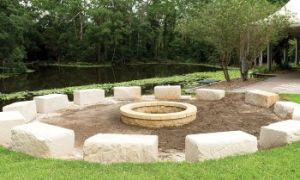Sensory processing is the effective understanding of various environmental stimuli through the sense organs and their corrective interpretation in one’s brain. The following article provides strategies on how you can help improve sensory processing in the early childhood learning environment.
Offer A Varied Sensory Diet
Look for a wide range of sensory-based activities that your learners can perform regularly within the learning environment. These will provide sensory feedback to the body to enable and practise efficient sensory regulation. You can include activities like:
- physical obstacle courses that use objects of different sizes and materials as obstacles
- swings with forward and back, side to side as well as rotary movements
- animal walks that use limbs in different ways
- squishing, squelching with paint, mud and such materials
- crafts that involve working with a variety of textures such as cards, cotton wool, crepe, and paper.
- rough and tumble play
- baking, making dough, tea party and tasting sessions
Mix Up Calming and Stimulating Activities
A good way to foster sensory processing is to offer a mix of calming and stimulating activities over the day. The latter usually includes running, hopping, skipping or jumping on a trampoline. Relaxing activities are those that involve lifting or bearing some amount of weight like pushing, pulling, wheelbarrow walking, carrying a bundle of books to a table or even a game of tug of war.
Check The Learning Environment
Avoid cluttering up shelves with too many toys or posters that might be a distraction to young learners. Set aside a calming space, like a bean bag or a tent for young children to crawl into or sit on during the times when they feel overwhelmed. Also, avoid having seating areas too close to high-traffic areas like the doors and corridors.
Get Out More
With its treasure trove of varied sights, sounds, smells, textures and tastes, nature offers many opportunities for sensory processing. See if you can set out with your young learners on a sensory scavenger hunt in the playground and along the way call attention to varied sounds, movements, colours, smells and tastes. Alternately plan a nature trail to explore textures like smooth, rough, grainy, dry, squishy, prickly and soft or just have fund potting plants and digging for worms in the garden. Such activities not only help children to explore their natural environment but also reap all the health rewards of being outdoors.
Watch Out For Difficulties
Sometimes children find it difficult to process the information received from their senses. Their sensory inputs might appear too intense or too mild to be registered, leading to behavioural challenges. The overstimulated child may appear easily distracted by noise, light, and touch or may avoid busy situations, loud noises and certain textures of foods. The understimulated child on the other hand may appear hyper-active crashing, jumping and finding it difficult to sit still or chew and bite non-food items. If you find such children, you might have to come up with individualized sensory diets like using tactile bins of rice or beans to calm the overstimulated child or using highlighters, and colour-coding information for the understimulated child.
Also known as sensory integration, sensory processing covers all the physiological, neurological and cognitive processes that enable the brain to register, organise and respond to sensory inputs in consistent and meaningful ways.
Further Reading
Sensory Processing Activities For Children To Increase Attention - The following article provides strategies and activity ideas for auditory, visual, tactile, oral, and movement sensory stimulation.
Calm Down Box For Children - The following article provides a list of self-regulates that can be included inside a calm down box.
Incorporating Natural Materials In The Learning Environment - The following provides information on Natural Materials In The Learning Environment, Practical Ideas With Natural Materials and more.
Reference:
Sensory Processing, Pediatric Occupational Therapy







 As an Educator in Australia, your pay rate falls under the Children’s Services Award 2010. This award states the minimum amount that an employer can
As an Educator in Australia, your pay rate falls under the Children’s Services Award 2010. This award states the minimum amount that an employer can When working as a qualified Early Childhood Teacher (with a university degree) within a service, your rate of pay will come from the Educational Services
When working as a qualified Early Childhood Teacher (with a university degree) within a service, your rate of pay will come from the Educational Services When working as a Diploma Qualified Educator your pay rate is from the Children's Services Award 2010. This Award states your minimum rate of pay
When working as a Diploma Qualified Educator your pay rate is from the Children's Services Award 2010. This Award states your minimum rate of pay When working as a Cert 3 Qualified Educator, your pay rate is from the Children's Services Award 2010. This Award states your minimum rate of
When working as a Cert 3 Qualified Educator, your pay rate is from the Children's Services Award 2010. This Award states your minimum rate of Educational Leaders play a crucial role in their early childhood service by ensuring that the educational program aligns with best practices and supports the holistic
Educational Leaders play a crucial role in their early childhood service by ensuring that the educational program aligns with best practices and supports the holistic In early childhood education and care, ratios are more than a technicality—they are a frontline safeguard. Every child deserves responsive supervision, emotional connection, and developmental
In early childhood education and care, ratios are more than a technicality—they are a frontline safeguard. Every child deserves responsive supervision, emotional connection, and developmental Here’s a comprehensive Mobile Phone and Smart Watch Policy tailored for early childhood education and care (ECEC) services in Australia, aligned with the latest 2025
Here’s a comprehensive Mobile Phone and Smart Watch Policy tailored for early childhood education and care (ECEC) services in Australia, aligned with the latest 2025 With the new national child safety reforms kicking in on 1 September 2025, early childhood services like yours have a real opportunity to lead the
With the new national child safety reforms kicking in on 1 September 2025, early childhood services like yours have a real opportunity to lead the The Sea of Fish Challenge is a national initiative that invites children, educators, families, and communities to create and display fish artworks as a symbol
The Sea of Fish Challenge is a national initiative that invites children, educators, families, and communities to create and display fish artworks as a symbol Across the early childhood education and care sector, educators are sounding the alarm: current staffing ratios are insufficient to deliver safe, meaningful, and developmentally appropriate
Across the early childhood education and care sector, educators are sounding the alarm: current staffing ratios are insufficient to deliver safe, meaningful, and developmentally appropriate


